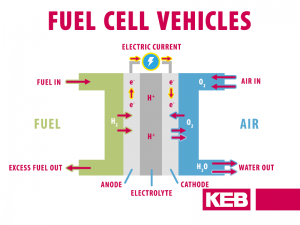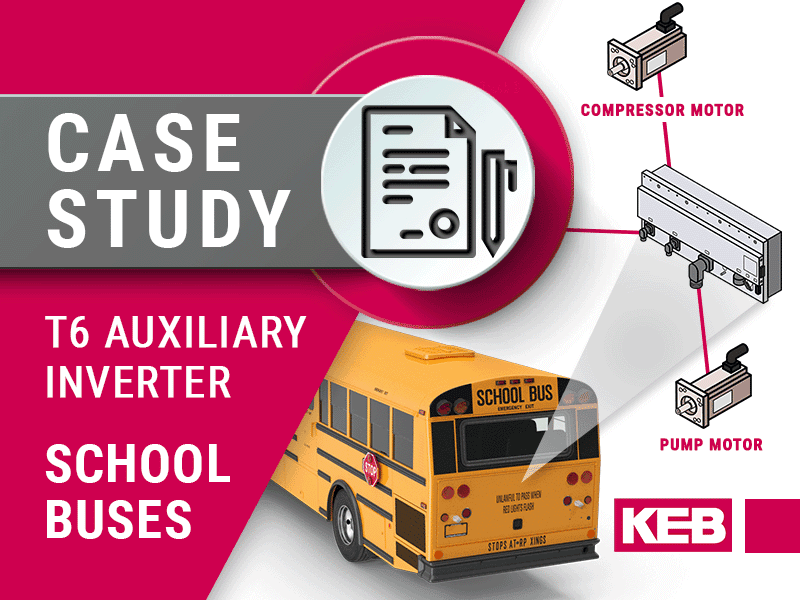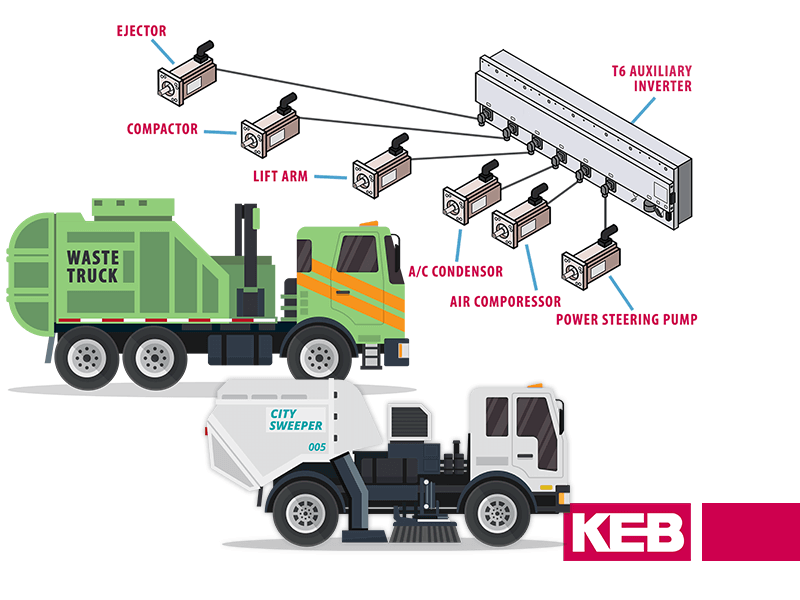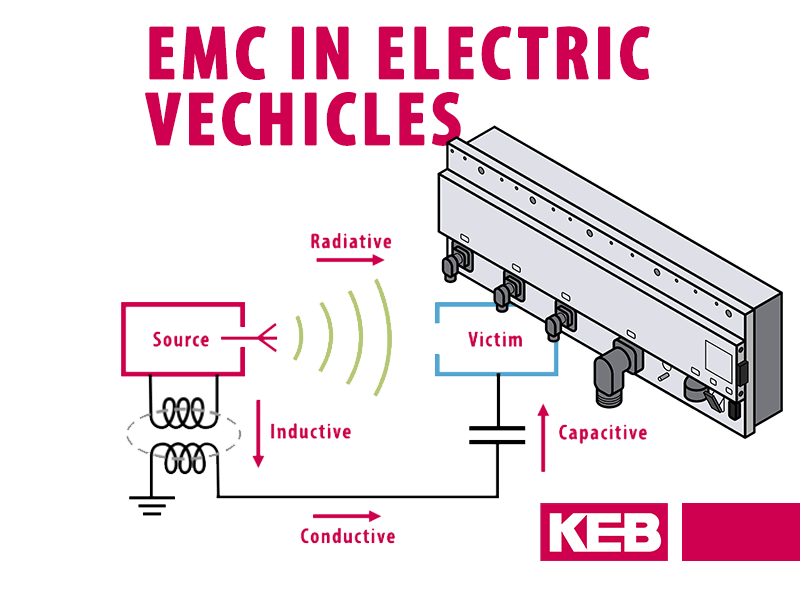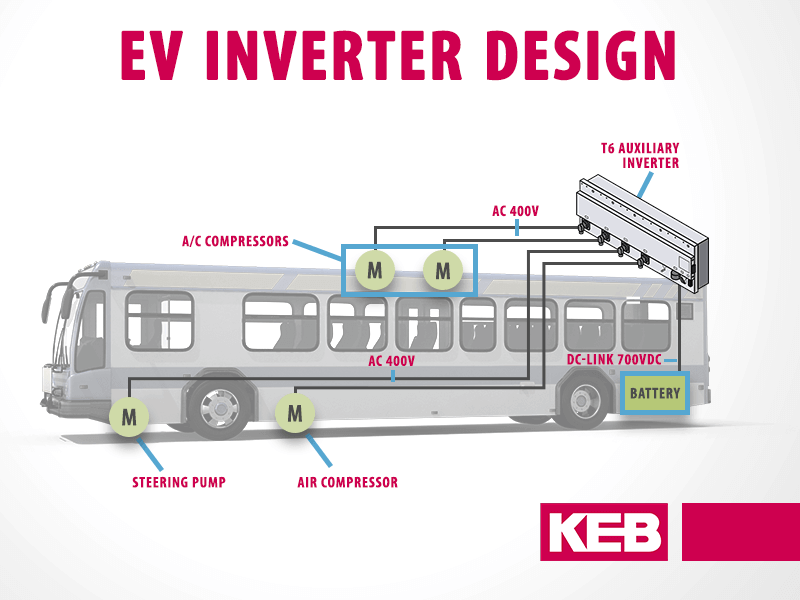Auxiliary inverter solutions for fuel cell vehicle turbo compressor applications
When it comes to electrifying auxiliaries with inverters in commercial electric vehicle applications, the use of high-speed motors on turbo compressors for fuel cells poses some unique challenges. In this article, I’ll give a brief overview of fuel cells, how they work, and their application in commercial electric vehicles and go on to discuss some of the unique challenges which must be considered when selecting an inverter for these applications and how they can be overcome.
Fuel cell technology has its place in the electric vehicle world and I intend to provide some insights into what makes these applications unique from an auxiliary inverter application standpoint.
There is an interesting debate between battery and hydrogen fuel cell technologies as the future of electric vehicle energy sources. While batteries have a limited range, hydrogen fuel cell refueling lacks infrastructure. While I don’t intend to argue for one or the other, there is common ground in hybrid applications where fuel cells act as range extenders. In this case, fuel cell technology has its place in the electric vehicle world and I intend to provide some insights into what makes these applications unique from an auxiliary inverter application standpoint.
To briefly describe how fuel cells are used, hydrogen “fuel” is separated into its proton and electron parts by a chemical reaction. DC electrical current is created by the flow of these electrons and is used as the power source to an electrical load (motor). The protons take a different path through the fuel cell electrolyte and meet with the path of the electrons on the other side and are combined with oxygen to create a second chemical reaction which produces water and heat as the byproduct.
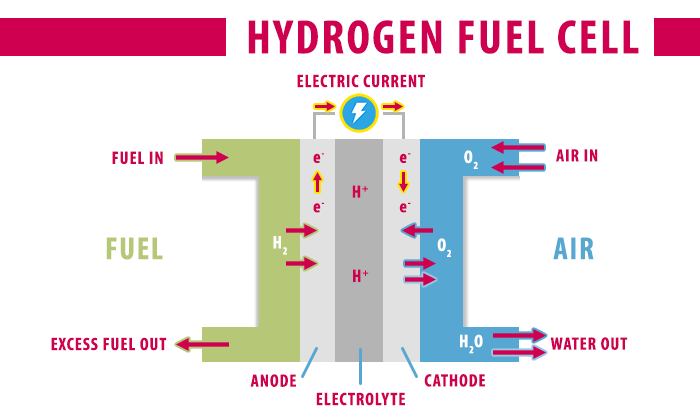
The benefit of hydrogen as a fuel source is that compressed hydrogen gas has a very high volumetric energy density which reduces vehicle weight and can also be used to create energy on-demand rather than charging a battery. These reasons are why fuel cells can be used as a high voltage DC energy source in vehicles to replace batteries or can be used as range extenders in heavy-duty, long haul commercial electric vehicle applications to complement batteries.
In addition to the hydrogen fuel supply and fuel cell stack itself, considerations in regards to the oxygen supply can also dictate whether a fuel cell system is viable in a vehicle application. Mass airflow rate, pressure, temperature and humidity are factors that affect the efficient chemical reaction process and can be regulated with the use of a compressor. Furthermore, a high-speed turbo compressor (e.g. 100,000 rpm) can be used to provide high pressure and allow for a smaller and more efficient compressor solution to optimize size and cost and help make the fuel cell a viable application solution. But, there are some unique challenges with such high-speed designs which should be considered from a motor control standpoint when selecting an inverter solution for turbo compressor applications.
High-speed output frequency
Quite simply, not all inverters support the high output frequencies needed for high-speed turbo compressor motors. Since most standard PM servo motor applications are less than 10,000 rpm, output frequencies higher than 599 Hz are generally not required. But, for high-speed turbo compressor applications, motor speeds can be in the range of up to 100,000 rpm which would require a maximum output significantly higher than 599 Hz.
As a note, inverters will generally be limited to a maximum of 599 Hz output by default due to export control reasons; therefore it will be necessary to discuss any high-speed requirement with a sales or applications engineer.
Speed control
At very high speeds closed-loop encoder feedback can have limitations. There are limits to the maximum pulse frequency of inverter feedback interfaces (or likewise needing to reduce the resolution by decreasing the encoder pulses per revolution), high-frequency signals are more prone to electrical noise, and an encoder must be able to mechanically withstand the high-speed range. Otherwise, high-speed applications generally do not require torque control at low speeds and thus an encoder is really not needed.
The alternate solution to closed-loop speed control with encoder feedback is KEB’s sensorless closed-loop speed control (SCL). SCL utilizes a motor model based on the learned motor characteristics (inductance, resistance, back EMF), which utilizes current and voltage as feedback. This eliminates the need for encoder feedback while still providing closed-loop performance.
It should be noted that there are many forms and terms for various “sensorless” solutions and not all are the same in their degree of performance. Additionally, not all manufacturers have a sensorless solution for permanent magnet motors. A sensorless “closed-loop” solution will provide the highest degree of performance and will include parameters for the motor characteristics or a motor learning the procedure for a motor model. Lastly, for high-speed motor applications that utilize a sine wave filter on the inverter output to provide a purely sinusoidal power waveform to the motor, it is necessary that an inverter solution has the capacity to take this into consideration as part of the motor model.
IPM motors
Internal permanent magnet (IPM) motors, as opposed to surface-mount permanent magnet (SMPM) motors, may also be another consideration in high-speed applications. IPM motors have permanent magnets embedded inside the rotor which eliminates the possibility of the magnets separating from the rotor due to increased centrifugal force at high speeds. IPM motors may also be used due to their high power density and energy efficiency. But, since the magnets are located within the rotor the symmetry lends itself to reluctance through the magnetic resistance of the rotor itself. In short, what this implies is a different and more complex motor model than surface mount PM synchronous motors. Therefore, whether an inverter is capable of supporting this type of motor is also another consideration when selecting an appropriate inverter for the application.
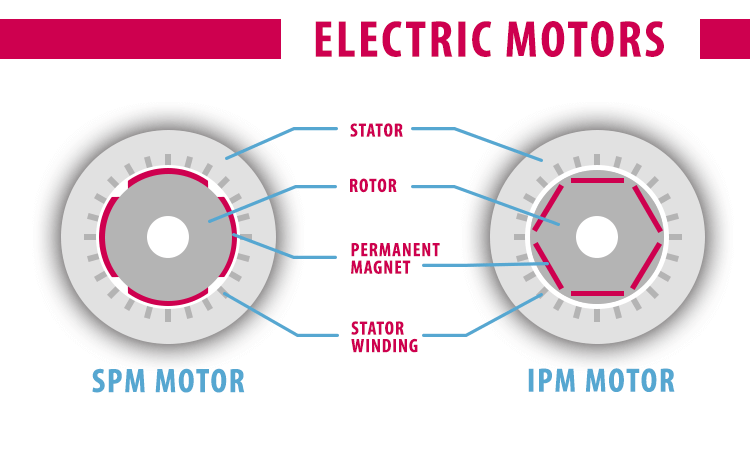
In summary, fuel cell technology in electric vehicle applications has the potential to bridge the gap in battery technology shortcomings by providing a long-range solution for a quick refueling and weight reduction, particularly for heavy commercial vehicles. To minimize the system cost, size and weight and make the application of fuel cell systems in these commercial electric vehicles viable, turbo air compressors utilizing high-speed motors up to 100,000 rpm can be part of the system solution.
But, high-speed motor applications can pose challenges to the inverters used to drive these motors. Such challenges include the ability to output the motor frequencies required for the high-speed range, the ability to provide controlled motor performance without encoder feedback in addition to the ability to operate different types of motors including surface mount and internal permanent magnet synchronous motors with or without sine wave filters. Therefore, it is important to consider an inverter solution that is capable of handling these various challenges based on the application.
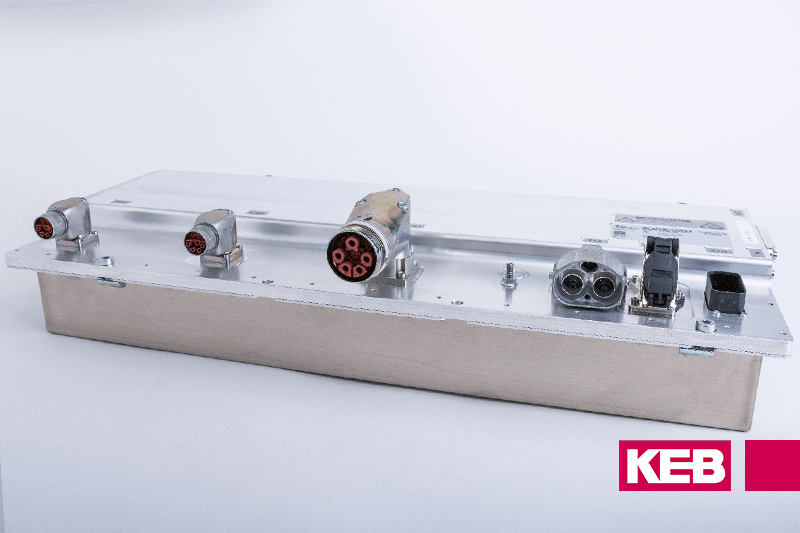
The T6 auxiliary inverter from KEB has the capability of solving all of these challenges. Advanced motor control algorithms allow sensorless closed-loop (SCL) operation of AC induction and synchronous SMPM, IPM, and switched reluctance motors at high frequencies up to 2,000 Hz and in conjunction with sine wave filters. Typical applications include various compressor types including turbo, centrifugal, scroll, and roots. The T6 is also built with automotive-quality components and designed to automotive environmental, mechanical and electrical (EMC) standards. In addition, the T6 is scalable up to six outputs in a single IP6k9k housing to support additional vehicle auxiliaries such as air compressors, steering pumps, and air conditioning compressors. This makes the KEB T6 an excellent auxiliary inverter solution for fuel cell vehicle applications including transit and coach buses, heavy-duty class 8 trucks, and medium-duty delivery trucks.
Let's Work Together
Connect with us today to learn more about our industrial automation solutions—and how to commission them for your application.
